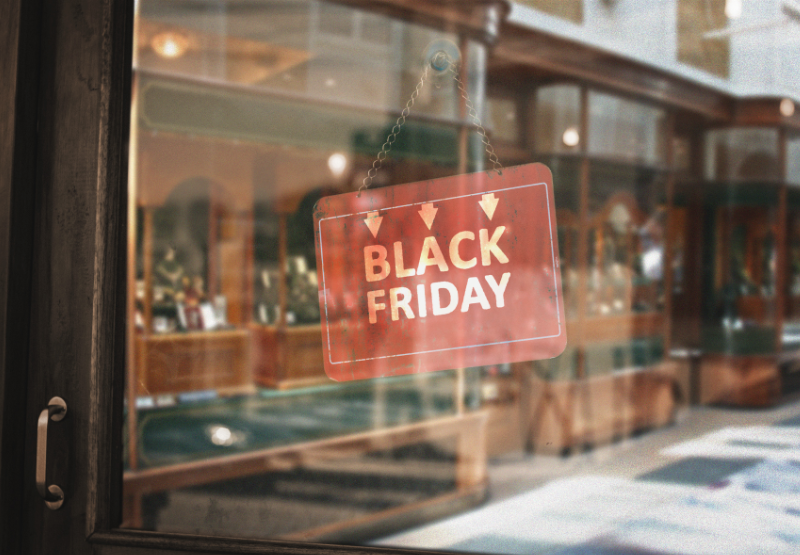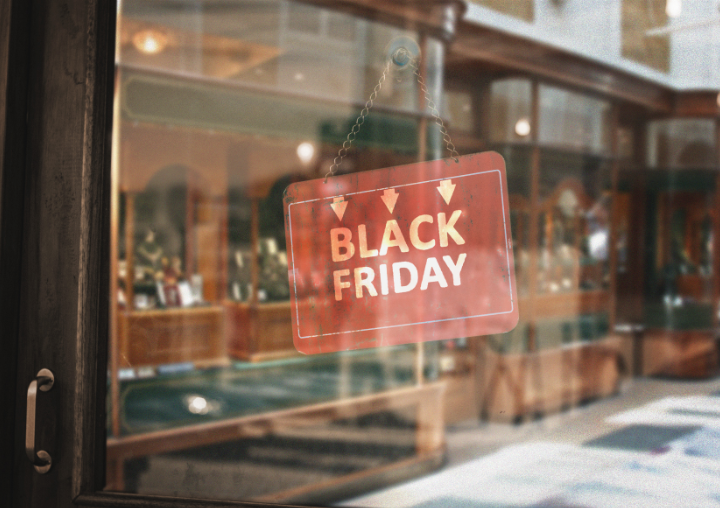
Holiday Trends
Resilient Payments Ensure Holiday Success
A resilient payment system ensures you capture every sale and maintain customer trust throughout the busiest shopping season of the year.

Peak season success is won long before the doors open on Black Friday. Canadian shoppers have clear expectations for value, convenience and flexible ways to pay, and they reward retailers that deliver. You do not need a bigger budget to win, you need sharper priorities, cleaner execution and stronger follow-through. This guide shares a practical plan to help you make the most of the highest intent weeks on the retail calendar.
Holiday momentum now stretches well before Cyber Monday and continues into December. Shoppers are researching, price checking and building baskets earlier than many teams expect. Your mix of offer design, operations and payment readiness can turn that steady intent into measurable gains. The playbook below focuses on repeatable actions that save time, protect margin and set you up to keep new customers past the season.
Black Friday and Cyber Monday still pull forward a surge of demand that sets the tone for the rest of the quarter. The combination of gift giving, self-gifting and year-end deal hunting concentrates attention in a tight window. A clear Black Friday Cyber Monday strategy remains one of the highest return investments for Canadian retailers. The period also creates a flood of first-time buyers who can become loyal customers with the right post-purchase plan.
Sales data confirm the continued importance of late November and December for the sector. Canada saw a strong lift in December retail sales after a flat November, which highlights how peak events can swing monthly performance. That pattern reinforces the need to plan inventory, staffing and cash flow for a late-season push. It also underscores why payment and fulfilment readiness are non-negotiable during these weeks.
The season also shapes customer expectations for the rest of the year. Shoppers experience new fulfilment options, faster checkouts and tailored offers, then expect the same in January. Teams that treat peak as a testing ground for better operations come out ahead. Those learnings compound across marketing, merchandising and store experience.
Shoppers have not stopped spending, they are simply more selective and more research driven. Many are starting earlier, using more channels and comparing prices before they commit. Payment preferences are shifting toward contactless and mobile, and store visits still play a central role in the journey. Value remains the headline, and loyalty benefits can be the tie breaker.
Tighter budgets do not mean lower standards. Consumers expect accurate hours, inventory visibility and strong customer service. They also expect transparent return policies and reliable delivery timelines. These expectations set the bar for every retailer during peak.
Canadians are doing their homework sooner, which gives well prepared brands a longer runway to build demand. More than half of Canadian shoppers begin holiday shopping before November, which means your messaging and merchandising need to start earlier. Search and social interest builds across September and October, then crests through the Cyber period. Retailers who consistently appear across the curve earn more last-click conversions when the deal is finalized.
Research is deep as well as early. New studies show a large share of purchases are researched first, and many decisions take at least a week. That means content, reviews and product details matter as much as your discount. Stay present from discovery to checkout so your brand remains the obvious choice when the cart closes.
Canadians have embraced tap and mobile wallets across daily life, and that behaviour carries into holiday shopping. Interac reports a significant surge in mobile contactless transactions, crossing one billion transactions within a twelve-month period. Younger shoppers lead, but older cohorts are following their example as trust grows. Ensuring tap and mobile wallet acceptance is a basic requirement, not a bonus feature.
Shoppers also show a growing comfort with self-checkout for speed and control. Younger Canadians are the most likely to plan on using self-checkout, and many plan to use mobile payment solutions for holiday purchases. Equip stores accordingly and keep associates nearby to assist with exceptions. That balance of speed and support reduces friction during your busiest moments.
Canadians are watching budgets closely and are ready to pounce on value. The latest national survey shows planned gift spending holding steady at nine hundred seventy five dollars, but with sharper price comparisons and disciplined hunting for deals. Loyalty programs and personalized incentives remain powerful levers to win those choices. Price still matters, but perceived value wins when tie breakers are needed.
Other studies echo that value focus. A majority of Canadians belong to at least one loyalty program, and many say those programs influence where they shop. Inventory reliability and visible stock levels also factor into store choice. Clear benefits plus dependable operations give shoppers confidence to buy now instead of waiting.
Stores still anchor the path to purchase for many Canadians. A large share plan to visit stores at the purchasing stage because they want to see and touch products, ask questions and leave with items in hand. That in-person confidence pairs well with digital convenience like store finders, local inventory and buy online, pick up in store. Together, these moves let shoppers choose the fastest way to get what they want.
Industry forecasts point to continued growth in pickup options and shoppable content. Retailers who coordinate product information, local availability and clear timelines help customers choose with less stress. Investments in accurate listings and fulfilment promises pay off during peak. Winning online and in store is not an either or choice for Canadian shoppers.
Shoppers are sending a clear message. Start the conversation earlier, make value obvious and let people pay the way they prefer. Keep stores central but connect them to digital tools that save time. The retailers who honour these signals will outpace peers in both conversion and loyalty.
Strong performance starts with alignment on outcomes before marketing ramps up. Pick a small set of goals, decide how you will measure them and lock accountability. Keep the list short so teams can concentrate effort where it moves the needle. Then translate those goals into day-by-day actions that guide decisions during live trading.
Clarity also reduces friction between channels and teams. When everyone knows the target for margin, sell-through, and new customer quality, debates get faster. You are not chasing every idea, you are selecting moves that serve the plan. That discipline is what turns a busy season into a productive one.
Promotions work best when they protect profit, not just revenue. Set minimum margin thresholds by category and confirm the mix of offers that keep you above that line. Tie discount depth to inventory risk and lead times so you move the right units without training shoppers to wait. Review shipping subsidies and return costs in the plan so your unit economics stay healthy.
Confirm how you will course correct if early results chase profit down. Create rules for pulling offers that underperform and adding value adds where they lift basket size. Share those rules across teams so changes feel expected, not reactive. A simple playbook lets you act quickly without second-guessing.
Decide the role each channel plays during the season. Map daily traffic targets for search, social, email and stores so the full picture matches your revenue goals. Assign a single owner per channel with authority to shift budget and creative when data shows a better path. Avoid overlapping offers that confuse shoppers moving between channels.
Post channel goals in a visible place so teams stay aligned through the rush. Host short daily huddles to review traffic, conversion and cost per visit. Document what you learned each day and what you will test tomorrow. Small adjustments stack into meaningful gains by Cyber Monday.
Agree on what success looks like at checkout before peak begins. Define targets for cart start rate, cart abandon rate and checkout completion rate by channel. List out the top sources of friction you aim to fix, then stage improvements across the weeks leading to Black Friday. Keep a change log so you can tie lifts back to specific fixes.
Give store teams a similar set of success measures for line speed and tender acceptance. Encourage them to flag bottlenecks such as price checks, pickup processing or gift card issues. Share quick wins that reduce time per transaction without adding pressure. Clean checkout experiences pay off across both channels.
New customer volume matters, but quality matters more. Decide how you will judge first purchase value, second order rates and email or SMS opt in rates for new buyers. Set a threshold for acceptable cost per new customer, then prioritize tactics that attract likely repeat purchasers. Price only promotions might spike volume but can lower long term value.
Work with retention teams to define what the first sixty days should look like for a new buyer. Align your calendar so post-purchase messaging lands on time for second purchase triggers. Share performance openly so acquisition and retention teams act as one. That is what turns a seasonal spike into predictable growth.
BFCM planning for Canadian retailers should lead with a short, measurable set of targets. Clear ownership makes faster decisions possible as conditions change throughout the week. Quality of growth should carry equal weight to quantity. Teams that plan this way often see steadier results in December and healthier retention into the new year.
Many Canadians begin to shop well before November, which means you need to plant seeds early. A strong plan blends awareness that keeps you present with demand capture when shoppers are ready. Focus on message clarity, audience signals and budget pacing across the full curve. Early momentum reduces pressure on the Cyber period and helps you hold price.
Consistency beats cleverness during peak. Shoppers scan fast, so make offers easy to understand and redeem. Feature benefits that matter most, such as fast local pickup, extended returns and flexible payments. Keep creative fresh, but hold your core pitch steady.
A calm, consistent plan will carry across the long season. Early signals strengthen your bidding and creative choices when traffic surges. Clear store and pickup information turns online interest into in-person sales. Brands that prepare for the marathon usually win the sprint.
Discounts will always have a place, but the offer mix should reflect who you are and what your customers value. Use promotions to reinforce your brand, not dilute it. Think in terms of value that helps people gift with confidence and feel good about their purchase. Build in reasons to buy now without teaching shoppers to wait forever.
Good offers also respect your profit goals. Incentives that lift basket size, move priority inventory and attract high-value customers pay you back. Test, learn and keep what works best for your audience. Small refinements can compound quickly across holiday volume.
Tiered offers help you meet different needs without over-discounting. Present a good, better, best structure, such as limited markdowns on core items, a bigger break on seasonal items and a premium bundle for those who want the full set. Make each tier clear so choices feel simple, not overwhelming. Keep thresholds aligned to margin and inventory realities so the math holds.
Track performance by tier and adjust through the week. If entry offer items sell through, consider shifting emphasis to bundles or add-ons that maintain profit. If premium bundles lag, test a small value add rather than a deeper cut. That approach keeps brand perception intact while still moving product.
Bundles increase perceived value without a race to the bottom on price. Curate gift sets that solve a problem or complete a theme, and price them to earn a natural uplift. Consider threshold-based gifts or shipping that encourages people to add one more item. The goal is a higher average order value that still feels like a win for the shopper.
Merchandising matters as much as the math. Feature bundles in gift guides, category pages and end caps in store. Train associates to suggest the most popular add-ons. When you make the next best item obvious, customers often say yes.
Loyalty benefits can help you keep your best customers close through peak. Offer early access, exclusive colours or bonus points that feel special without deep discounts. Pair this with simple, public offers that welcome new customers at a fair price. That balance rewards history while still fueling acquisition.
Mind the optics across channels. Keep the tone appreciative, not exclusive, and make redemption steps simple. Show the value of joining your program with proof such as member pricing or perks. Clear, inclusive framing prevents confusion at the till.
Many shoppers appreciate payment options such as instalments for larger baskets. Interest free plans can increase conversion when used thoughtfully and paired with clear terms. Set sensible cart thresholds and put disclosures in plain language. Align staff training and customer support so questions at checkout get quick answers.
Monitor repayment, returns and fees to ensure the program makes sense for your business. Independent analyses expect buy now pay later use to grow in Canada, and observers note increasing regulatory attention. That context makes responsible design and transparent communication especially important. Treat payment choice as a service that supports value, not as a blunt conversion tool.
Meaningful offers have a job to do beyond moving units. They protect your margin, strengthen your brand and make customers feel confident. Keep the structure simple and the value obvious. Use what you learn to refine promotions you will run again next year.
Customers move between channels as they research, compare and purchase, so your plan must connect those dots. Ensure store hours, pickup timelines and return policies are accurate everywhere a shopper might look. Sync inventory across systems so what people see online matches what is on the shelf. Align creative and offers so shoppers never question which price or perk applies.
Store visits still play a major role during the purchasing stage for many Canadians. People want to touch products, ask questions and leave with gifts in hand. Equip teams with tablets or tools that show live inventory and loyalty details so associates can solve problems quickly. Those human touches are often what turn a browse into a purchase.
Use omnichannel checkout optimization for BFCM to remove friction at every handoff. Offer buy online pick up in store that flows smoothly at the counter, and let customers return online orders in store with no fuss. Keep payments consistent so wallets, debit and gift cards work the same across channels. This consistency lowers anxiety and lifts conversion when the store is busy.
Operations can make or break the season once demand hits. Small bottlenecks cascade into long lines, missed pickups and support backlogs. Plan your people, processes and space with the same rigour you bring to marketing. Give teams simple checklists and service scripts so they can stay calm under pressure.
Preparation also builds morale. Staff who feel ready deliver better experiences and sell more with less strain. Clear schedules, cross training and visible goals help people stay focused. Celebrate wins through the week to keep energy high.
Technology and payments must be ready before demand peaks. Load on sites and networks will spike, checkout flows will get stress tested and fraud attempts will rise. Holiday shopping season payment readiness is a must-have plan, not a nice-to-have. Treat this like a go live, with owners, timelines and fallbacks.
Resilience beats perfection. Aim for stable performance, simple paths to purchase and broad payment acceptance. Document what you will test, when you will test it and how you will roll back if needed. Confidence here frees teams to focus on customers.
Speed and stability directly influence conversion when shoppers are primed to buy. Run load tests that reflect peak traffic and make sure you have monitoring in place across your stack. Cache heavy assets, simplify scripts and remove any non-essential steps. Keep status dashboards up where teams can see them.
Have clear incident playbooks so the right people fix issues fast. Share simple updates with stores and support if you experience a slowdown. Customers respect honest communication that sets expectations. Your recovery pace can be a brand builder when handled well.
Make it easy to complete a purchase with as few fields as possible. Offer guest checkout, intelligent address entry and clear error states. Include debit, credit, gift cards and mobile wallets so customers can pay their way. Canada’s strong adoption of contactless and mobile use means wallet acceptance is now expected across channels.
Carry the same tender readiness into stores. Test tap, chip, mobile and gift cards before peak. Train staff to switch gracefully between lanes if a device stalls. Consistency at the till lowers line time and keeps tempers cool.
Peak season attracts more fraud attempts, so tune your risk controls before volume hits. Use layered checks such as address and card verification, device intelligence and velocity rules. Align the thresholds to balance risk and approval rates, then watch the data closely during the week. Keep your dispute playbook handy with evidence templates ready to send.
Canadian authorities have flagged the rise in fraud losses over recent years, and attempted fraud during the Cyber period is often elevated. Preparation reduces avoidable losses and protects genuine customers from unnecessary friction. Include a process for fast manual review on high-value orders to save good sales. Simple steps here can prevent painful write-offs in January.
Security is part of customer trust, especially when new shoppers meet your brand for the first time. Keep payment data protected with tokenization and never store sensitive details you do not need. Confirm your point of sale and ecommerce environments meet current standards. Train teams to spot suspicious behaviour and escalate concerns quickly.
Review who has access to admin tools and rotate credentials before peak. Remove unused accounts and require multi-factor authentication for staff logins. These basics stop many incidents before they start. A secure experience is a selling point customers rarely see, but always feel.
The right foundation keeps money flowing when demand surges. Faster pages and simpler checkouts raise conversion without bigger discounts. Strong risk controls protect revenue and brand trust. A secure, resilient stack is a gift that keeps paying back after the holidays end.Data should guide your moves from the first day of peak to the last package shipped. Build a simple command centre view that updates hourly across key metrics. Keep owners focused on the numbers they can influence. Short feedback loops turn small ideas into meaningful wins.
Measurement only helps if it leads to action. Share what you learn during morning standups and lock the day’s tests. Protect room in the calendar for quick creative swaps and offer tweaks. The goal is steady improvement as the week unfolds.
A lightweight measurement rhythm beats a complex dashboard nobody checks. Focus on the few signals that drive action. Share wins quickly so the whole team benefits. These habits sharpen results during peak and raise your floor for the next cycle.
Peak brings a wave of first-time shoppers. The mission is to turn them into familiar faces who return through winter and spring. Retention begins before the first order ships and continues with thoughtful service after delivery. Treat every new purchase as the start of a longer relationship.
Keep your message helpful, not pushy. Share tips for using or caring for the product and invite questions. Offer fair options for exchanges and returns so confidence stays high. That trust makes the next purchase easier.
Create a simple sequence that thanks new customers, sets expectations for shipping and highlights useful content. Introduce your loyalty program benefits without forcing an immediate join. Share a few recommended items that complement their purchase, not a wall of unrelated products. Make it easy to reach a person if they need help.
Time the series to real milestones such as order confirmation, shipment and delivery. Follow up with a request for a rating or review once they have had time to use the product. Use that feedback to improve product pages for the next shopper. Helpful messages build credibility you can bank on later.
Not every shopper buys again during peak, so plan offers that invite a return visit after Cyber Monday. Focus on replenishment items, accessories or service add-ons tied to what they already bought. Keep the tone personal and respectful of inbox fatigue. A gentle nudge beats a hard push in December.
Use segments to time messages by delivery date or likely usage window. Layer in social and search remarketing so you appear where they research. Track response by cohort to refine your timing next year. These small lifts add up when multiplied across thousands of new buyers.
Seasonal buyers can become repeat customers with simple programs. Offer easy reorders for consumables, size exchanges for apparel or care plans for electronics. Subscriptions work when they solve a real problem, not when they feel like a trap. Keep cancellation policies simple to build trust.
Make the value concrete, such as free refills every third order or early access to new colours. Show proof from other customers who enjoy the program. Measure churn and average lifetime value to confirm the model works. Adjust terms as you learn what your audience prefers.
Great service is the engine of repeat business. Publish clear return and exchange steps, and let customers start the process online. Train store staff to resolve issues fast, even for online purchases. A smooth resolution turns a potential loss into loyalty.
Connect support insights to merchandising and operations. If sizing runs small, update product pages and signage. If a pickup step confuses people, simplify the flow and retrain. Continuous fixes show customers you are listening.
Retention is not an accident, it is a sequence. Thoughtful welcomes, respectful win-backs and useful programs keep people coming back. Reliable service closes the loop and turns a short season into a longer relationship. These tactics help convert new holiday shoppers into long-term customers without relying on constant discounts.
Many retailers tell us their biggest stressors during peak are checkout slowdowns, payment confusion and fraud exposure. We solve those problems with fast, reliable payments across in-store and online, plus tools that make reconciliation and reporting simple. Our systems support debit, credit, mobile wallets and gift cards with tap and chip acceptance that keeps lines moving. We also provide built-in risk controls, tokenization and authentication tools that help reduce disputes while preserving genuine sales.
Teams need practical support, not guesswork. Moneris brings bilingual, Canadian based service and proactive monitoring so issues get resolved quickly. Our insights help you spot trends by store, device and tender so you can plan staffing, stock and offers with confidence. Businesses who operate online and in person can connect payments, settlement and analytics through one partner, which removes complexity and saves time on close.
We are focused on helping you accept payments easily, protect your revenue and make better decisions with clean data. Our goal is to remove friction so your teams can focus on customers and growth. If you are planning for peak or building a stronger year-round plan, we are ready to help. Count on us for trusted guidance and secure payments that support the way Canadians shop.
Holiday Trends
A resilient payment system ensures you capture every sale and maintain customer trust throughout the busiest shopping season of the year.

Holiday Trends
Plan early, simplify offers, connect channels and prepare payments so you capture demand and build lasting customer relationships through the season.

Holiday Trends
Retailers that prepare early, streamline checkout, connect channels, and protect uptime turn the biggest sales weekend into lasting revenue.

Holiday Trends
Black Friday was the top shopping day in 2024, driven by early promotions, mobile shopping, and regional spending shifts. Learn what small businesses should focus on in 2025 to plan better and sell smarter.